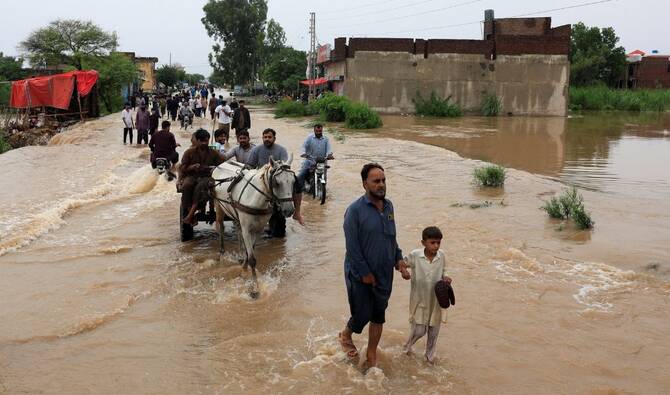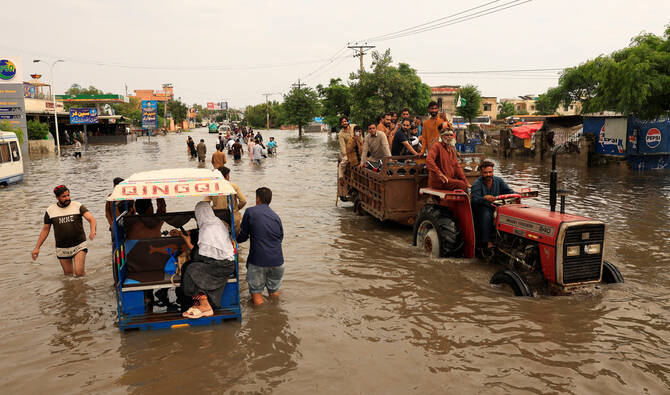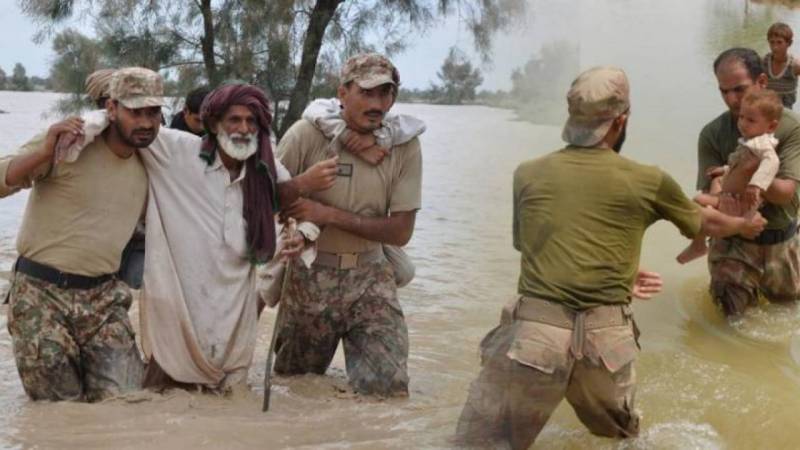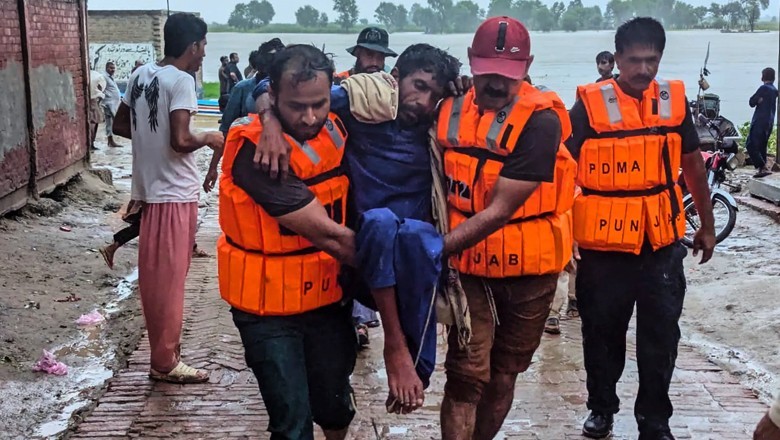Web Desk

Lahore: More than 200,000 people have been evacuated as unprecedented floods devastate parts of Punjab, Pakistan’s most populous province, following torrential monsoon rains and water releases from Indian upstream dams.
Rescue teams have ferried thousands to safety by boat after the Provincial Disaster Management Authority (PDMA) and NDMA declared “exceptionally high flood” conditions along the Ravi, Sutlej, and Chenab rivers.
Record Rainfall and Indian Dam Releases
Officials confirmed that India opened all gates of Thein Dam on the Ravi River, followed by an announcement to release water from Madhopur Dam. The sudden inflows have compounded heavy rains in upper catchment areas, pushing downstream flows to catastrophic levels.
At 2 a.m. Wednesday:
- Chenab at Head Marala outflow exceeded 900,000 cusecs (exceptionally high flood).
- Ravi at Head Jassar outflow exceeded 200,000 cusecs (exceptionally high flood).
- Head Khanki (Chenab) and Ganda Singh Wala (Sutlej) recorded very high flood levels.
In Sialkot, officials reported record-breaking rainfall — the heaviest in nearly five decades — leaving large sections of the city submerged.

Evacuations and Relief Operations
Authorities said:
- 72 villages and 45,000 residents affected in Kasur alone.
- 14,000 citizens and 17,000 livestock relocated.
- 67 relief camps, 38 medical camps, and 46 veterinary centres established.
- 130 boats, 115 motors, 500 rescue workers, 1,300 life jackets, and 1,600 tents mobilised.
Rescue 1122 reported evacuating over 28,000 people from Kasur, Okara, Pakpattan, Bahawalnagar, and Vehari districts.
Despite evacuation calls, many families are refusing to leave, citing poverty and fear of losing property and livestock.

Army Called In
The Punjab government has requisitioned the army in six districts – Lahore, Faisalabad, Kasur, Sialkot, Narowal, and Okara – to aid civil authorities in protecting lives and property.
“The army has been called in to aid civil authorities and ensure the safety of citizens,” said a Punjab Home Department spokesperson.

Climate Alarm and Future Risks
NDMA Chairman Lt Gen Inam Haider Malik told parliament that next year’s monsoon may be 22% more intense, warning that Pakistan’s glaciers are melting rapidly, threatening the country’s water security.
“This year’s devastating floods were largely caused by glacial melting,” he said, projecting that 65% of Pakistan’s glaciers could vanish within 52 years, exposing the country to drought and famine-like conditions.
Prime Minister Shehbaz Sharif warned that Pakistan, one of the world’s most climate-vulnerable nations, cannot face the crisis alone.
“The devastating floods of 2022 and the loss of over 700 lives this year alone are stark reminders that Pakistan needs international support to cope with extreme weather,” he said.























